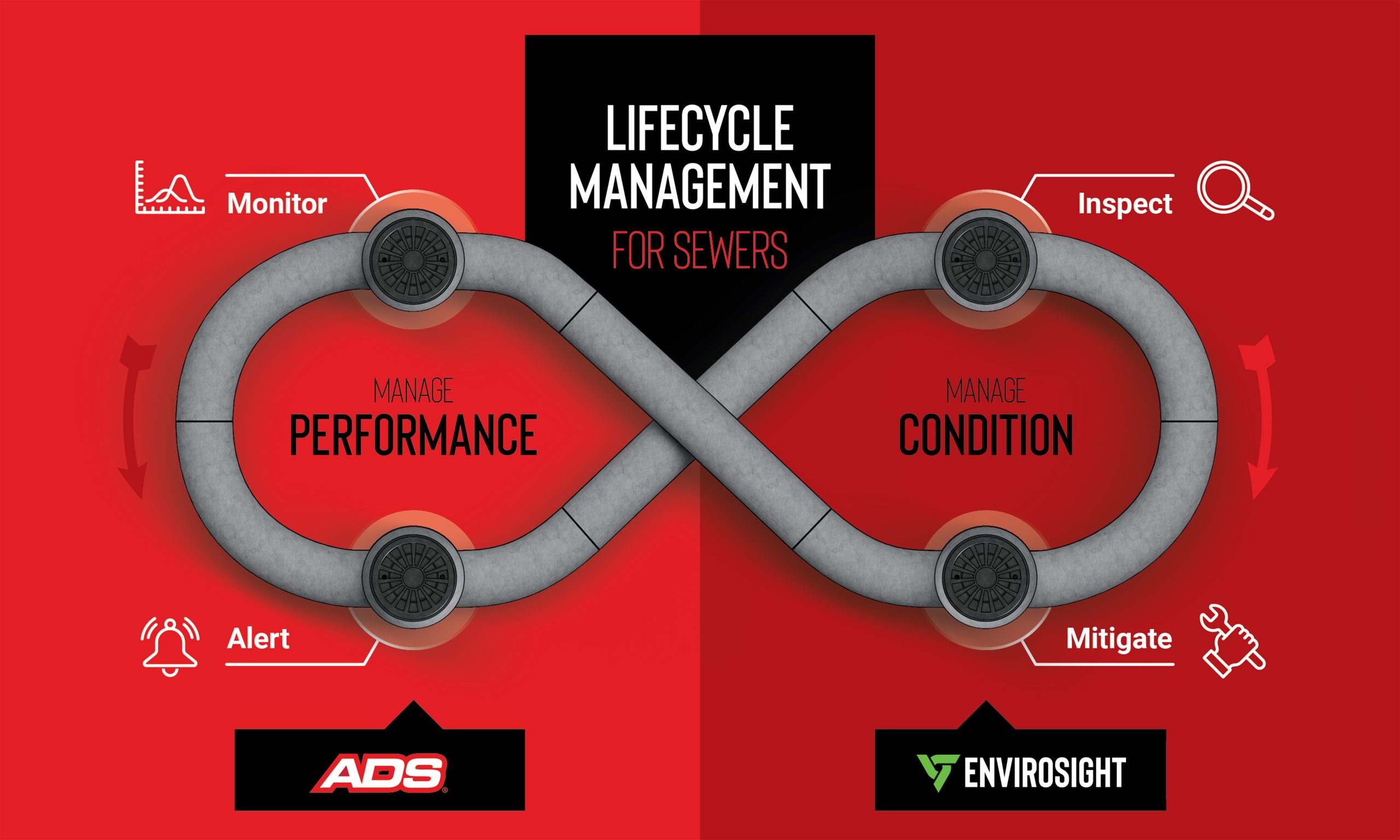Need a Better Way to Manage Sewers?
Wastewater operators across North America are challenged with keeping their city sewer lines flowing while facing stagnant budgets and aging sewer infrastructure. Excessive inflow and infiltration (I/I) can cause a collection system to exceed its capacity limits, leading to increased treatment costs and sanitary sewer overflows (SSOs) that release untreated effluent into the environment. In the past, Municipalities’ options have been limited to high-frequency scheduled cleaning programs which, while effective at cleaning pipes, can result in pipes getting over-cleaned. This stresses resources and leads to premature pipe degradation and early pipe failure. Today’s teams have neither the time nor the money to do it all.
The question, then, is how can municipalities sustainably and cost effectively eliminate I/I and avoid SSOs?
Companies in the IDEX Intelligent Water Group provide complementary solutions to address the full range of end-to-end requirements for municipalities. For example, a workflow combining technologies from ADS Environmental Services® and Envirosight™ takes both sewer performance and sewer condition management into account, enabling operators to stay ahead of collection system maintenance—and under budget.
Step 1: Monitor Performance
Remote site monitoring makes it easy to stay on top of your collection system’s performance. These ultrasonic systems mount near the top of a manhole and continuously measure flow levels. They can detect both low flow conditions, indicating an upstream issue, or high flow conditions, suggesting a downstream issue. The monitors provide operators with continuous, real-time data and alarms. Remote site data is sent to cloud-based software where operators can use dashboards and graphs to easily visualize their system’s status as well as take advantage of advanced tools including predictive analytics.
Step 2: Alert Concerns
Cloud-based software provides continuous user access, allowing operators to view flow levels and hot spots 24/7 and receive notifications for locations of concern. When the software’s predictive tool sees a blockage forming, it sends an alert to the system’s main dashboard. These alerts are categorized for severity and prioritized for urgency. For emergent events, alarms are sent via email or text message. However, most blockages form over time, which is where predictive software can provide an edge.
Step 3: Inspect Conditions
Once alerted to a potential problem, it is time to inspect. CCTV crawlers are recognized as the best tools for collecting the most detailed data on sewer conditions. However, rapid inspection equipment, like zoom survey cameras, is often more cost-effective and efficient for moving assessments forward quickly. Today’s HD zoom cameras are great first line of defense for sewer inspectors, and offer an efficient, straightforward way to get a sense of pipe condition. When deployed in manholes, these powerful tools can see hundreds of feet into lines instantly.
After using a zoom camera for initial inspection, hot spots that are in dire need of attention can get the detailed assessments they need with a CCTV crawler. With HD pan/tilt/zoom cameras, robust reporting capabilities, and add-on functions like laser and side-scan, crawlers produce valuable footage that allows inspectors to flag defects and problem areas in need of repair or maintenance.
Step 4: Mitigate Issues
Once pipe condition is thoroughly understood, digital workflows can automatically assign rehab and cleaning crews to address the issues. This maintenance can include cleaning, CIPP lining, point repair, traditional dig-and-replace work, and more—whatever maintenance is necessary to restore normal flow levels and ensure pipe integrity. There are no wasted efforts thanks to crews knowing exactly where to go and what to target.
Once the situation has been mitigated, flow metering will continue the cycle of continuous monitoring.
The Workflow Built to Last a Lifetime
Optimizing the management of sewer performance and sewer condition benefits the health and safety of our communities and our natural environment. This workflow lays out the most efficient and cost-effective solution for complete sewer lifecycle management, enabling municipalities to conserve resources while providing the highest quality collection system services to their communities.
Ready to dig deeper into sewer inspection workflows? The Phased Assessment Strategy for Sewers (PASS) simplifies assessments and reduces costs. Get the guide to PASS free only from Envirosight


